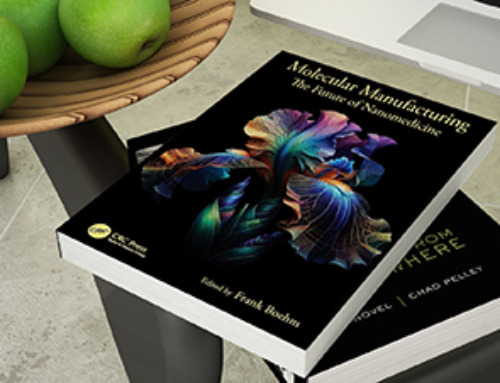Manmade pollutants and climate change contribute to millions of deaths from cardiovascular disease each year, warn a coalition of leading scientists.
A new series published today (June 3) in the Journal of the American College of Cardiology highlights how pollution, in all its forms, is a greater health threat than that of war, terrorism, malaria, HIV, tuberculosis, drugs, and alcohol combined.
The researchers focus on global warming, air pollution, and exposure to wildfire smoke. They also highlight the lesser-known drivers of heart disease including soil, noise and light pollution, and exposure to toxic chemicals. The team includes researchers from the University of Edinburgh, Icahn School of Medicine at Mount Sinai, Global Observatory on Planetary Health Boston College, Centre Scientifique de Monaco, University Medical Centre Mainz, and the Victor Chang Cardiac Research Institute.
Urgent Need for Better Monitoring
They say there is an urgent need to improve the monitoring of these pollutants to identify communities most at risk, and better understand how exposure to specific pollutants raises the risk of cardiovascular disease at the individual level.
Professor Jason Kovacic, Director and CEO of the Australian-based Victor Chang Cardiac Research Institute, says there needs to be far greater recognition of the dangers of pollution and the role it plays in causing around nine million deaths each year globally.
Professor Kovacic says: "Every year around 20 million people worldwide die from cardiovascular disease with pollutants playing an ever-increasing role.
"Pollutants have reached every corner of the globe and are affecting every one of us. We are witnessing unprecedented wildfires, soaring temperatures, unacceptable road noise and light pollution in our cities, and exposure to untested toxic chemicals in our homes.
Various Pollution Impacts on Health
"Our bodies are being bombarded with pollutants from every angle and they are taking a toll on our heart health. The evidence suggests that the number of people dying prematurely because of these very different forms of pollution is far higher than currently recognized."
Pollutants are known drivers of cardiovascular disease, but they affect the body in different ways. Smoke and other toxins can be directly inhaled deep into the lower respiratory tract and reach the blood and then be transported to other organs and throughout our bodies. They can cause oxidative stress which can damage cells and organs including the heart.
Other pollutants like noise and light pollution can affect sleep patterns, drive inflammation and lead to an increase in blood pressure and weight gain. Extreme heat can also lead to dehydration, decreased blood volume, increased cardiovascular strain, and acute kidney failure.
Gaps in Understanding and Future Directions
Professor Kovacic adds: "Whilst many of these biological mechanisms are known, we still have a huge gap in our understanding of the link between pollutants and heart disease.
"There are hundreds of thousands of chemicals that haven't even been tested for their safety or toxicity, let alone their impact on our health. We also need to discover if there are other risk factors that make people more susceptible – such as pre-existing conditions, lifestyle factors or where they live."
Professor Kovacic and the other authors say that in the future, people will be routinely tested for exposure to more pollutants – just like children are currently tested for lead exposure in the USA.
The authors note that while the environmental crisis is imminent, and impact on health ever more pressing, the impetus for change appears sporadic. "Urgent action is required as climate change strides forward and pollution infiltrates the air we breathe, the water we drink, the food we eat, and the places we live in," they write.
The team of researchers make a series of recommendations including:
- Calling for the implementation of heart-healthy changes to city design such as increasing tree cover, safe means of active travel and reduced use of vehicles.
- Ending subsidies to the fossil fuel industry to enable more investment in renewables and cleaner energy production.
- Public health campaigns about the dangers of air pollution.
- Medical education to better reflect the growing dangers of pollutants.
Key statistics:
- Outdoor and indoor air pollution combined, are associated with over seven million premature deaths per year, of which over 50% are ttributable to cardiovascular causes, principally ischemic heart disease and stroke.
- A fifth of all cardiovascular deaths are caused by air pollution.
- During heat waves, the risk of heat-related cardiovascular mortality may increase by more than 10%.
- In the USA there has been a 77% increase in exposure to wildfire smoke since 2002.
- Globally, wildfire smoke has been estimated to be responsible for 339,000 to 675,000 premature deaths per year.
- Over 300,000 new synthetic chemicals have been manufactured since 1950, and the human safety profile of many of these chemicals is unknown.
- In Europe it is estimated 113 million people are affected by long-term day-evening-night traffic noise levels of at least 55 dB(A).
References:
"Environmentally Not So Friendly: Global Warming, Air Pollution, and Wildfires: JACC Focus Seminar, Part 1" by Mark R. Miller, Philip J. Landrigan, Manish Arora, David E. Newby, Thomas Münzel, and Jason C. Kovacic, 3 June 2024, Journal of the American College of Cardiology.
DOI: 10.1016/j.jacc.2024.03.424
"Water, Soil, Noise, and Light Pollution: JACC Focus Seminar, Part 2" by Mark R. Miller, Philip J. Landrigan, Manish Arora, David E. Newby, Thomas Münzel, and Jason C. Kovacic, 3 June 2024, Journal of the American College of Cardiology.
DOI: 10.1016/j.jacc.2024.03.421
News
Two New Books From Frank Boehm, NA Founder – To be Released Dec. 2025
Molecular Manufacturing: The Future of Nanomedicine This book explores the revolutionary potential of atomically precise manufacturing technologies to transform global healthcare, as well as practically every other sector across society. This forward-thinking volume examines [...]
What could the future of nanoscience look like?
Society has a lot to thank for nanoscience. From improved health monitoring to reducing the size of electronics, scientists’ ability to delve deeper and better understand chemistry at the nanoscale has opened up numerous [...]
Scientists Melt Cancer’s Hidden “Power Hubs” and Stop Tumor Growth
Researchers discovered that in a rare kidney cancer, RNA builds droplet-like hubs that act as growth control centers inside tumor cells. By engineering a molecular switch to dissolve these hubs, they were able to halt cancer [...]
Platelet-inspired nanoparticles could improve treatment of inflammatory diseases
Scientists have developed platelet-inspired nanoparticles that deliver anti-inflammatory drugs directly to brain-computer interface implants, doubling their effectiveness. Scientists have found a way to improve the performance of brain-computer interface (BCI) electrodes by delivering anti-inflammatory drugs directly [...]
After 150 years, a new chapter in cancer therapy is finally beginning
For decades, researchers have been looking for ways to destroy cancer cells in a targeted manner without further weakening the body. But for many patients whose immune system is severely impaired by chemotherapy or radiation, [...]
Older chemical libraries show promise for fighting resistant strains of COVID-19 virus
SARS‑CoV‑2, the virus that causes COVID-19, continues to mutate, with some newer strains becoming less responsive to current antiviral treatments like Paxlovid. Now, University of California San Diego scientists and an international team of [...]
Lower doses of immunotherapy for skin cancer give better results, study suggests
According to a new study, lower doses of approved immunotherapy for malignant melanoma can give better results against tumors, while reducing side effects. This is reported by researchers at Karolinska Institutet in the Journal of the National [...]
Researchers highlight five pathways through which microplastics can harm the brain
Microplastics could be fueling neurodegenerative diseases like Alzheimer's and Parkinson's, with a new study highlighting five ways microplastics can trigger inflammation and damage in the brain. More than 57 million people live with dementia, [...]
Tiny Metal Nanodots Obliterate Cancer Cells While Largely Sparing Healthy Tissue
Scientists have developed tiny metal-oxide particles that push cancer cells past their stress limits while sparing healthy tissue. An international team led by RMIT University has developed tiny particles called nanodots, crafted from a metallic compound, [...]
Gold Nanoclusters Could Supercharge Quantum Computers
Researchers found that gold “super atoms” can behave like the atoms in top-tier quantum systems—only far easier to scale. These tiny clusters can be customized at the molecular level, offering a powerful, tunable foundation [...]
A single shot of HPV vaccine may be enough to fight cervical cancer, study finds
WASHINGTON -- A single HPV vaccination appears just as effective as two doses at preventing the viral infection that causes cervical cancer, researchers reported Wednesday. HPV, or human papillomavirus, is very common and spread [...]
New technique overcomes technological barrier in 3D brain imaging
Scientists at the Swiss Light Source SLS have succeeded in mapping a piece of brain tissue in 3D at unprecedented resolution using X-rays, non-destructively. The breakthrough overcomes a long-standing technological barrier that had limited [...]
Scientists Uncover Hidden Blood Pattern in Long COVID
Researchers found persistent microclot and NET structures in Long COVID blood that may explain long-lasting symptoms. Researchers examining Long COVID have identified a structural connection between circulating microclots and neutrophil extracellular traps (NETs). The [...]
This Cellular Trick Helps Cancer Spread, but Could Also Stop It
Groups of normal cbiells can sense far into their surroundings, helping explain cancer cell migration. Understanding this ability could lead to new ways to limit tumor spread. The tale of the princess and the [...]
New mRNA therapy targets drug-resistant pneumonia
Bacteria that multiply on surfaces are a major headache in health care when they gain a foothold on, for example, implants or in catheters. Researchers at Chalmers University of Technology in Sweden have found [...]
Current Heart Health Guidelines Are Failing To Catch a Deadly Genetic Killer
New research reveals that standard screening misses most people with a common inherited cholesterol disorder. A Mayo Clinic study reports that current genetic screening guidelines overlook most people who have familial hypercholesterolemia, an inherited disorder that [...]





















